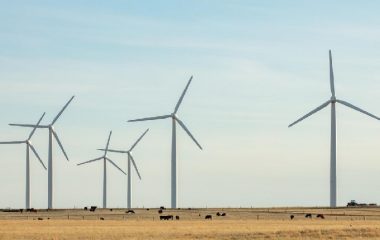Many member countries of the European Union are increasing their reliance on fossil energy, much of it imported, despite large domestic renewable resources and the fact that the European Union (EU) has pledged to develop renewables totalling 20% of all generation capacity before 2020 and 50% of all capacity before mid-century. As Lee Buchsbaum outlines in an article in Powermag, each of the 28 member nations enjoys wide latitude to chart its own course. “A growing number of economists and researchers believe the nations are missing out on an incredible economic opportunity as well. Nowhere is this more evident than in the sun-rich but economically poor southern nations of Italy, Greece, and Croatia,” Buchsbaum said.
The author concludes prospects offered by the introduction of net metering represent the only hope of reviving Greece’s photovoltaic sector, which collapsed with the course reversed to lignite. Net metering will enable prosumers – consumers who generate their own power and deliver it to the grid, to offset the power from the utility in a billing period. Greece offered generous subsidies before the crisis, when there was a complete policy overhaul with retroactive tariff reductions, the article notes. Household tariffs are EUR 11.5 euro cents per KWh, while savings through net metering reaches 13 cents per KWh, the article adds.
Meanwhile, short-term forecasts for expansion in EU’s south are ”cloudy at best,” he stressed. Many players in the region, among them owners of conventional power stations, have succeeded in portraying photovoltaic systems as costly options, said Eicke Weber, director of Germany’s Fraunhofer Institute for Solar Energy Systems and university professor of physics and solar energy. Nowadays, however, it has become clear that solar energy is ready, costs are low, and funding is available in many cases – the only thing missing in Germany and in a good part of Europe is political will, he added.
Market penetration of solar power systems was 7.6% in Greece, 8% in Italy, and 7% in Croatia towards the end of last year, the article notes. The government in Zagreb began awarding a handful of exploration and drilling permits for natural gas in the Adriatic Sea while freezing new grid connection licenses for solar installations, the author said. Croatia had 33.28 MW of solar photovoltaics early last year, compared to just 89.72 kW in December 2012, but the sector isn’t expected to grow drastically anymore, Buchsbaum said.
The region is passing on a great opportunity for job creation and reduction of the dependence on energy imports, according to studies like the one published recently by Greenpeace. Findings by a team from Stanford University show the three particular countries, along with 136 other nations, could meet all energy needs from renewable sources by 2050, the Powermag article’s author reminded.




















